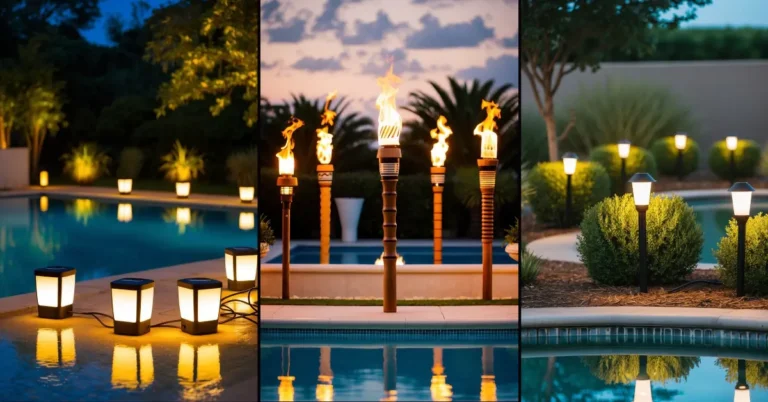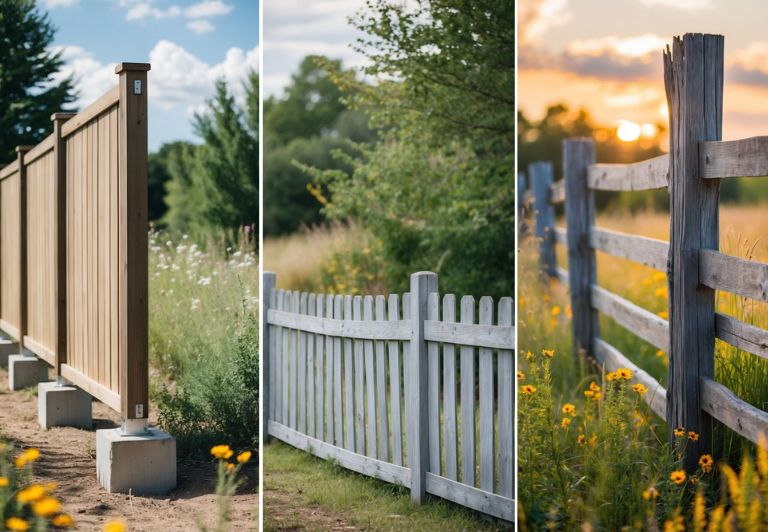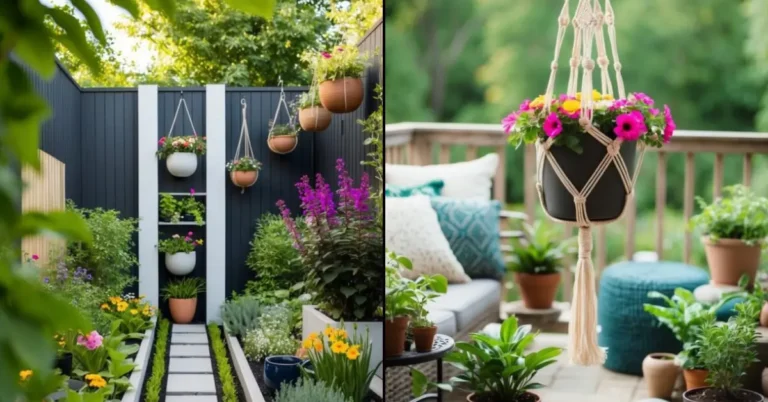12 Stellar Garden Design Ideas (For Every Size and Style)
Creating a well-designed garden can enhance the beauty and functionality of your outdoor space.
Whether you have a small backyard or a spacious plot, thoughtful design ideas can help you make the most of your garden area.
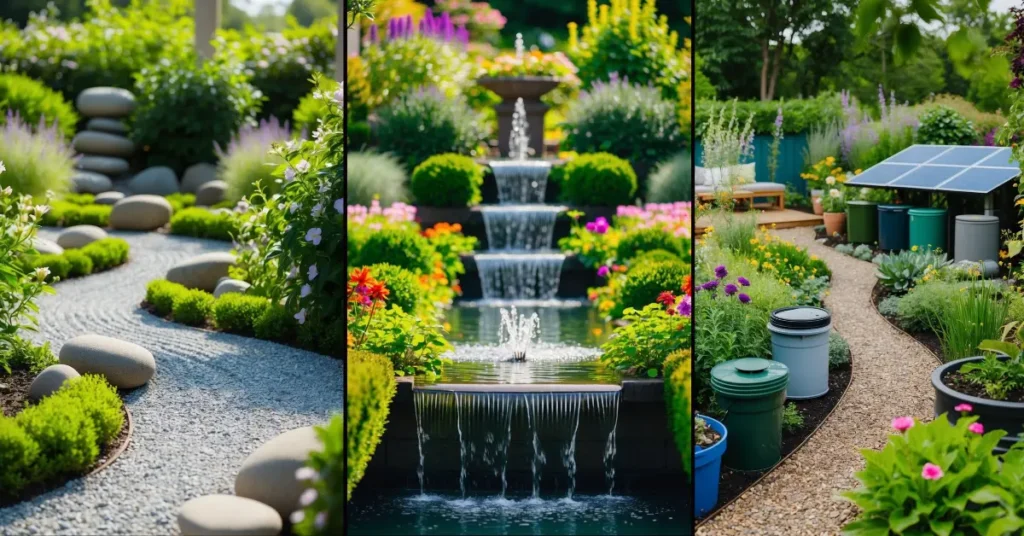
This article will introduce you to twelve stellar garden design ideas that can inspire a fresh approach to your landscaping projects.
1) Pollinator Garden with native flowers
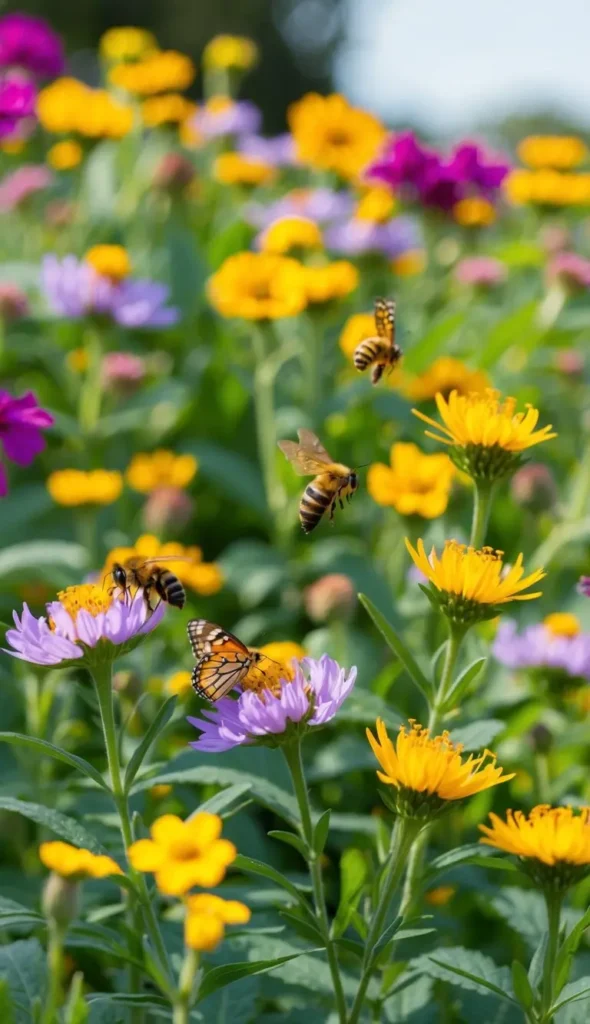
You should select native flowers to support local pollinators effectively. These plants are adapted to your region’s climate and soil, making them easier to maintain.
Including a variety of native species will ensure nectar and pollen are available throughout the growing season. This approach helps sustain bees, butterflies, and other pollinators in your garden. See examples of native plants for pollinators for guidance.
2) Zen Garden incorporating raked gravel and stones
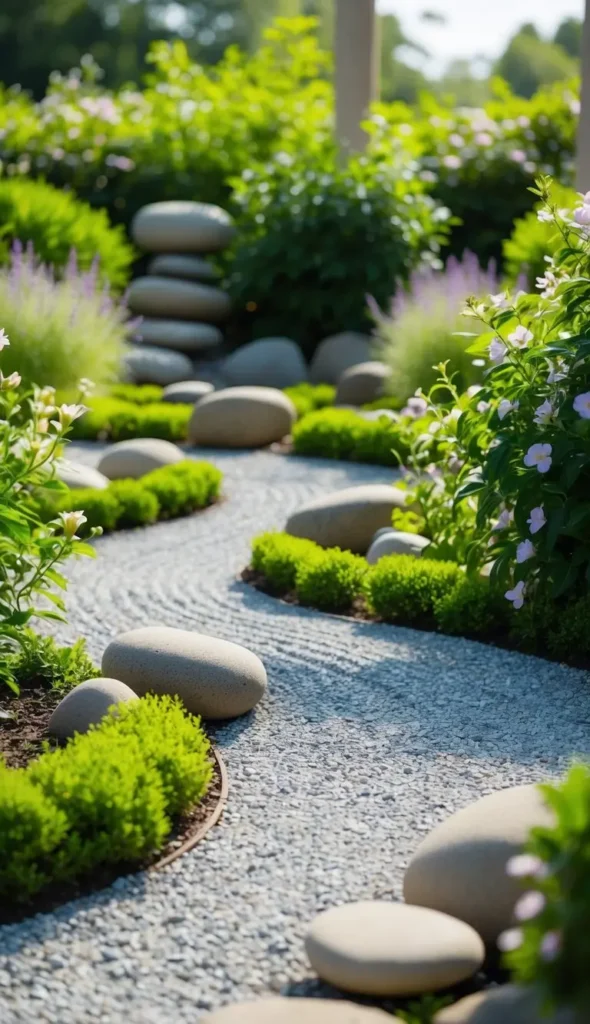
You can create a calm space by using raked gravel patterns and carefully placed stones. These elements reflect simplicity and balance, key features of a Zen garden. Focus on natural materials like sand, gravel, and rocks to maintain a minimalist look. For ideas on arrangement and style, see this guide to a gravel Zen garden.
3) Water Feature Garden with a cascading fountain
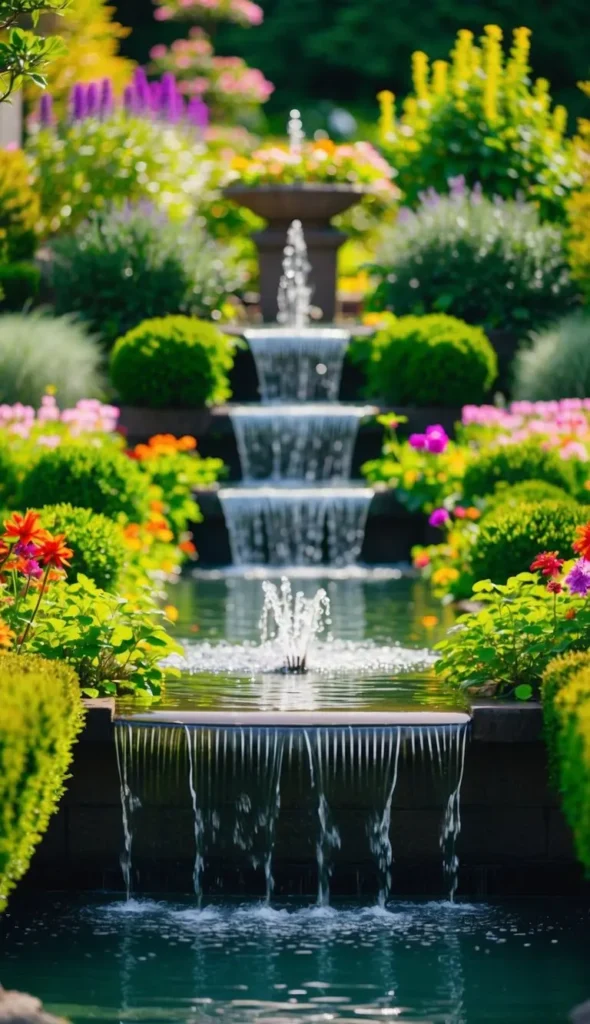
You can enhance your garden by adding a cascading fountain, which creates a calming atmosphere with flowing water. This feature brings movement and sound that enrich your outdoor space.
Position the fountain where it complements your existing plants and pathways. A cascading fountain also attracts birds, adding further life to your garden. Consider designs that suit your garden’s style for a cohesive look. See examples of cascading water features.
4) Vertical Garden using trellises and wall planters
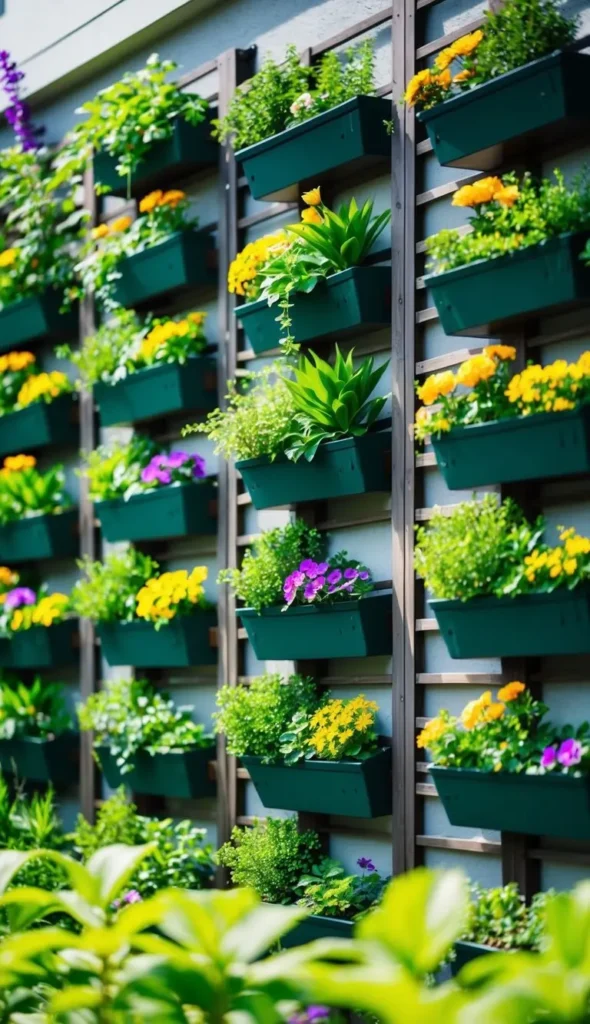
You can maximize your garden space by using trellises for climbing plants. These structures support vines and create a layered effect without occupying much ground area.
Wall-mounted planters offer a practical way to grow herbs or flowers vertically. They are ideal for small spaces and add visual interest to plain walls.
Consider combining trellises with planters to build a living wall that enhances both functionality and aesthetics in your garden ideas.
5) Vegetable and Herb Garden in raised wooden beds
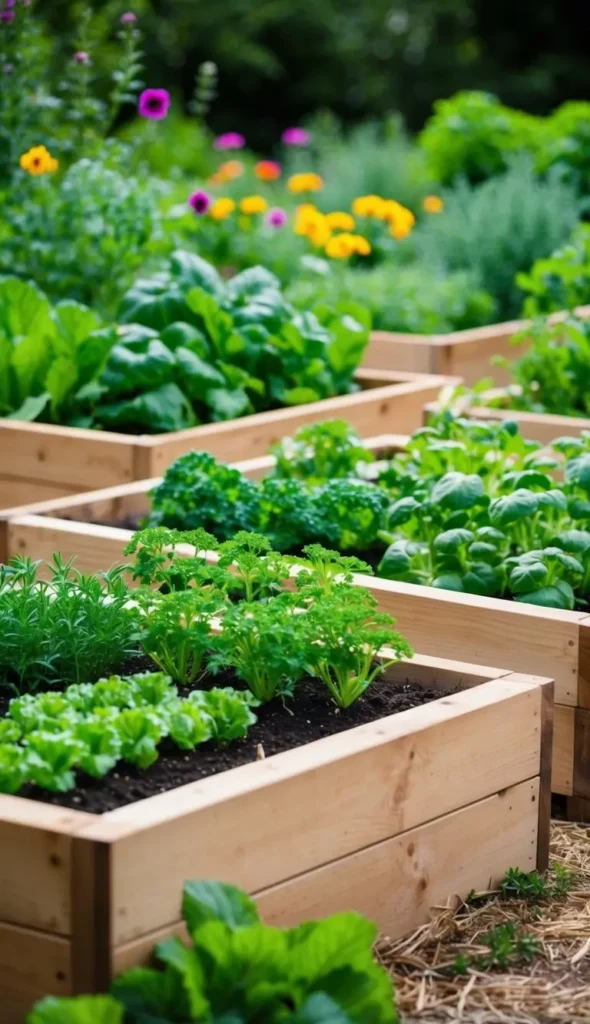
You can create an organized and efficient growing space by using raised wooden beds for vegetables and herbs. These beds improve drainage and soil quality, which benefits plant health. Wooden materials are widely available and offer a natural look that blends well with most garden styles. For design ideas, see this collection of raised garden bed ideas.
6) Alpine Plant Garden with rock arrangements
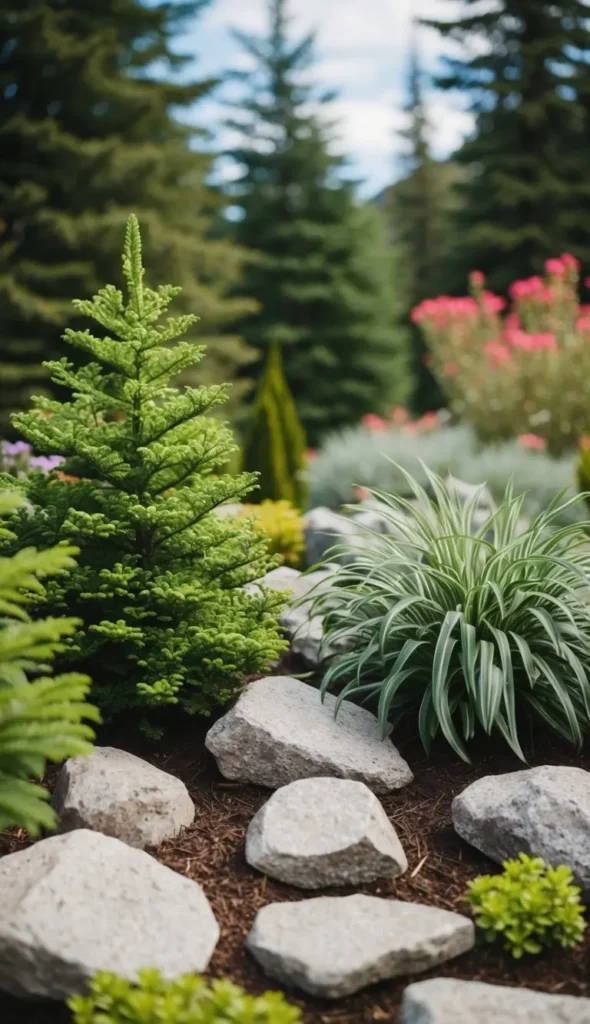
You can create an alpine plant garden by combining small, hardy plants with carefully placed rocks. These plants thrive in well-drained soil and cooler conditions.
Arrange rocks to mimic natural mountain slopes, providing both structure and drainage. Consider plants like Dianthus and Cyclamen for color and texture. For more ideas, explore Alpine Rock Gardens.
7) Sensory Garden featuring aromatic and textured plants
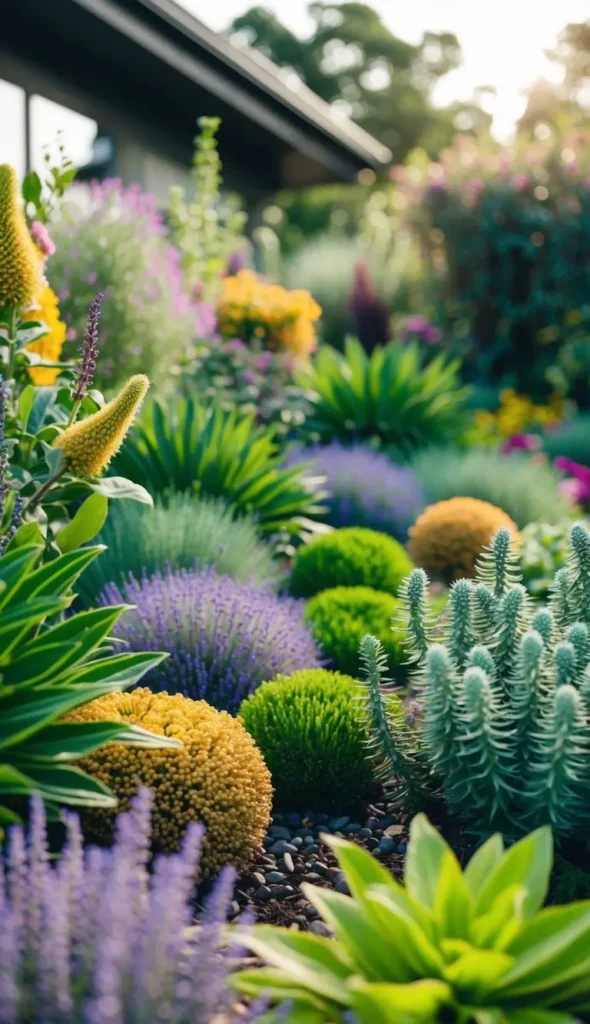
You can enhance your garden by incorporating aromatic plants such as lavender, jasmine, and mint. These add pleasant scents that create a soothing atmosphere.
Including textured plants like lamb’s ear or ornamental grasses offers tactile interest. Combining scent and texture engages multiple senses, enriching your gardening experience. For more ideas, explore sensory garden designs that focus on all five senses.
8) Grouping plants in large blocks of identical species
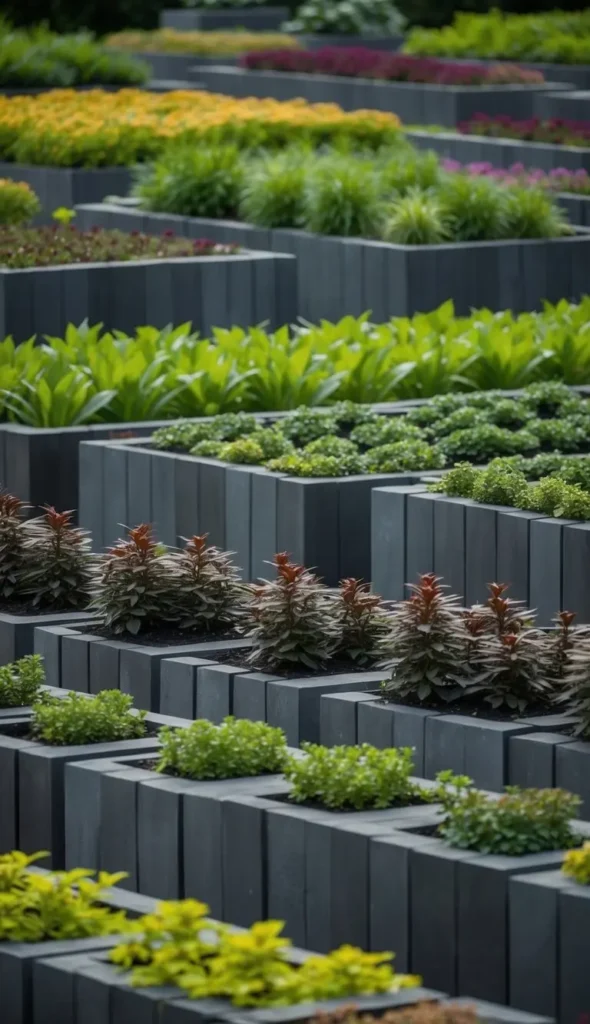
You can create a bold visual impact by grouping plants in large blocks of the same species. This technique provides clarity and structure to your garden design.
However, this approach is considered traditional and may appear static compared to more mixed planting methods. For a balanced effect, consider combining large blocks with varied textures or colors. You can learn more about evolving planting styles at Intermingling and the Aesthetics of Ecology.
9) Curved pathways to enhance small garden spaces
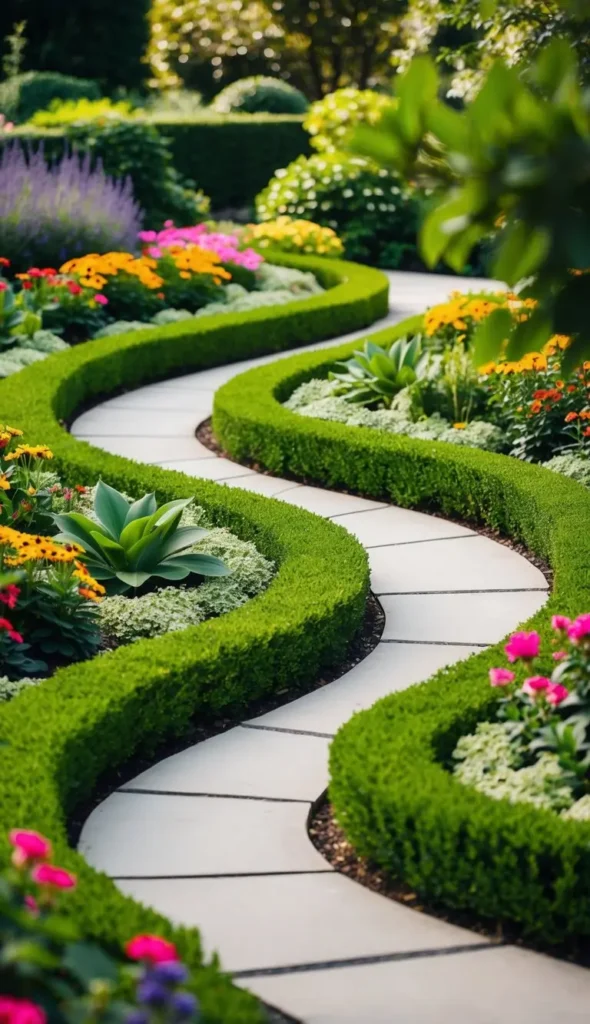
You can use curved pathways to make your small garden feel larger and more inviting. Gentle curves guide the eye naturally, adding flow and softness to the space.
Choosing materials like stone or gravel for these paths can complement your garden’s design. Curved pathways also help define different garden areas without overwhelming your space.
For more ideas on curved pathways, explore options on landscape design featuring curved garden paths.
10) Wooden fences with integrated flower boxes
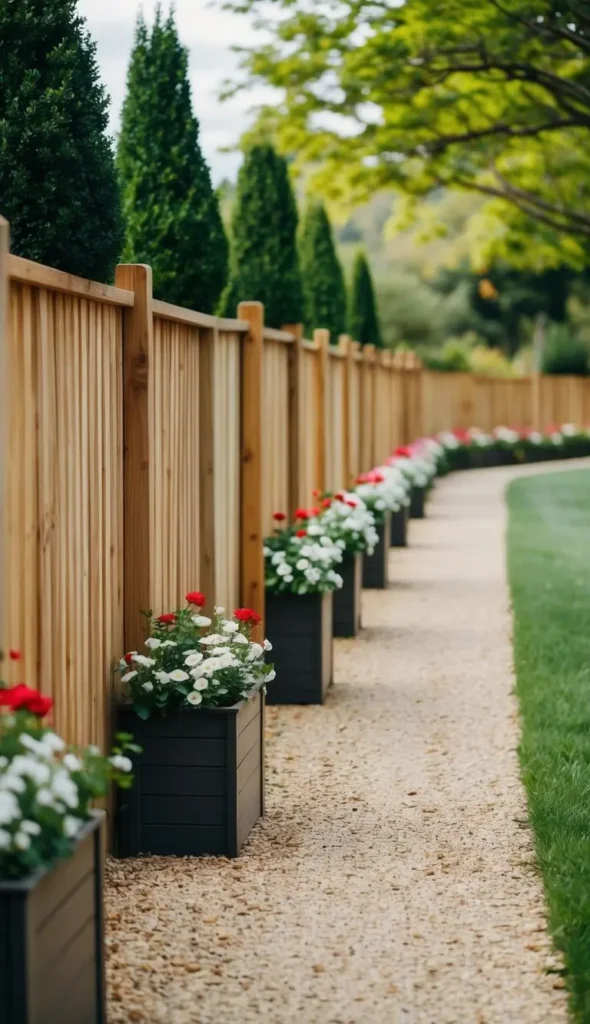
You can enhance your garden’s privacy and beauty by adding flower boxes to wooden fences. These planters allow you to grow flowers or herbs without taking up extra space.
Integrated boxes often include drainage to protect your plants and fence structure. Consider designs that balance function and aesthetics for a polished outdoor look. For ideas, explore privacy fence planter box concepts.
11) Seashell flower decorative accents
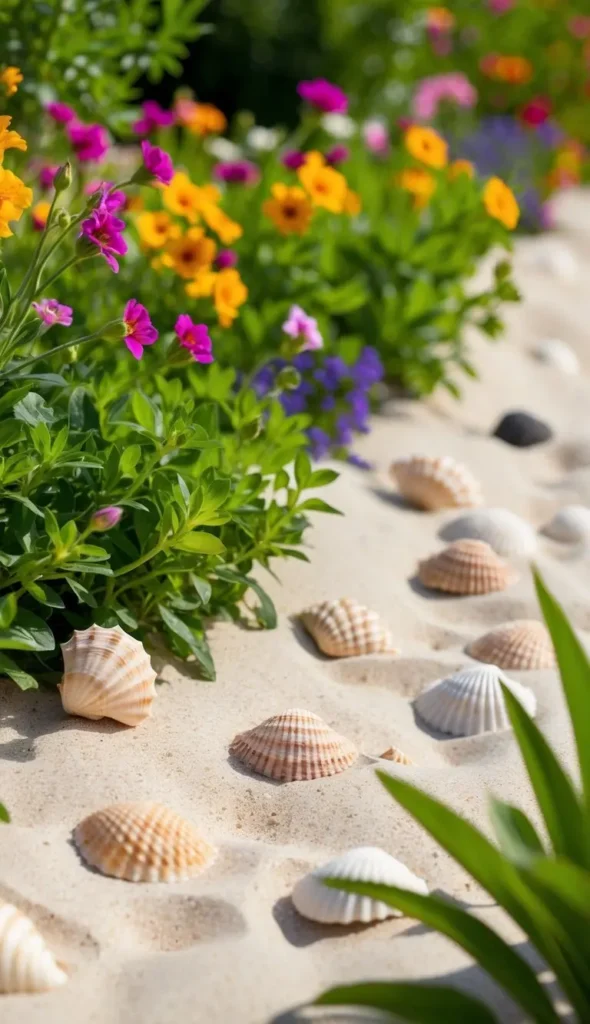
You can enhance your garden by incorporating seashells into floral arrangements. These accents add a natural, coastal touch without overwhelming your existing plants.
Use seashells as decorative holders for small flowers or integrate them into wreaths and centerpieces to create unique garden features. For ideas, explore seashell garden decor inspirations like those found in seashell garden decor ideas.
12) Mixed pattern oyster shell garden ornaments
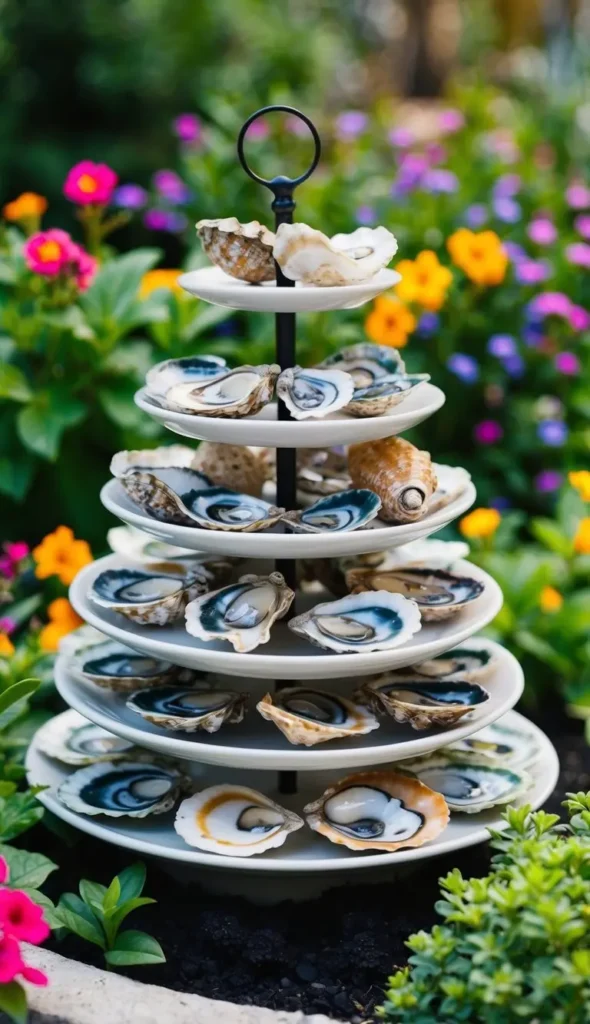
You can enhance your garden with mixed pattern oyster shell ornaments. These pieces add texture and natural charm without overwhelming your space.
Using varied shell shapes and sizes creates visual interest that complements plants and pathways. Consider placing them near flower beds for subtle decoration. For inspiration, see Romantic Country’s design ideas.
Key Principles of Garden Design
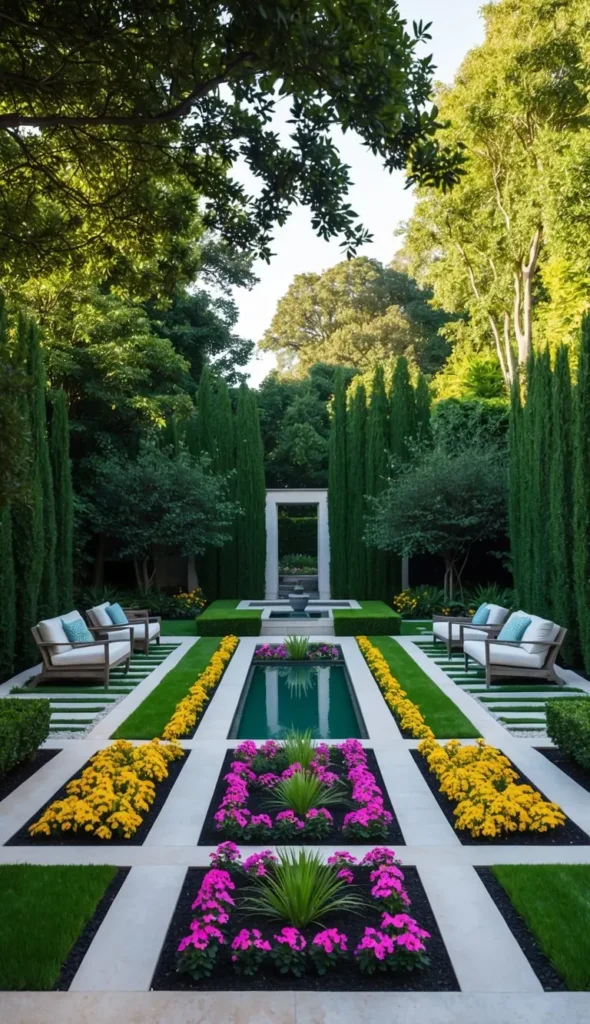
Effective garden design requires careful consideration of space, plant choices, and the use of colors and textures to create visual harmony. Understanding how these elements work together can transform your outdoor area into a balanced and functional environment.
Understanding Spatial Planning
Spatial planning helps you organize your garden to maximize both utility and aesthetics. Begin by defining clear zones for different activities like relaxation, planting, or pathways. This approach prevents overcrowding and directs movement naturally through the space.
Think about scale and proportion when arranging features. Larger plants or structures should be balanced with open areas to avoid a cramped feeling. Using shapes like circles or rectangles can help create “garden rooms” that feel distinct yet connected.
You should also consider sightlines. Position taller plants or features so they frame views without blocking your garden’s overall openness. This planning enhances your experience by making your garden feel larger and more inviting.
The Role of Plant Selection
Choosing the right plants is essential for creating a garden that thrives year-round. Select species that suit your local climate and soil conditions first to ensure health and durability.
Incorporate a mix of plant types—trees, shrubs, perennials, and ground covers—to provide structure and variety. This blend can improve visual interest and support biodiversity.
Consider plant height and spread to avoid overcrowding and ease maintenance. Group plants with similar water and light needs to simplify care routines.
Diversify flowering times within your plant selection. This strategy guarantees continuous color and texture changes through the seasons, keeping your garden visually engaging.
Color, Texture, and Balance
Color coordination is crucial when planning your garden’s visual appeal. You can use complementary or analogous color schemes to create either vibrant contrasts or soothing transitions.
Texture adds another layer of interest. Combine fine, medium, and coarse foliage to provide depth and complexity. For example, pairing soft ferns with stiff grasses enhances tactile variety.
Balance is about distributing visual weight evenly across your garden. Use symmetry for a formal look or asymmetry for a more natural feel. Both approaches need repetition of key elements to unify the design.
In your design, repeat colors and textures at different points to guide the eye and establish harmony throughout the garden.
Sustainable Practices for Lasting Beauty
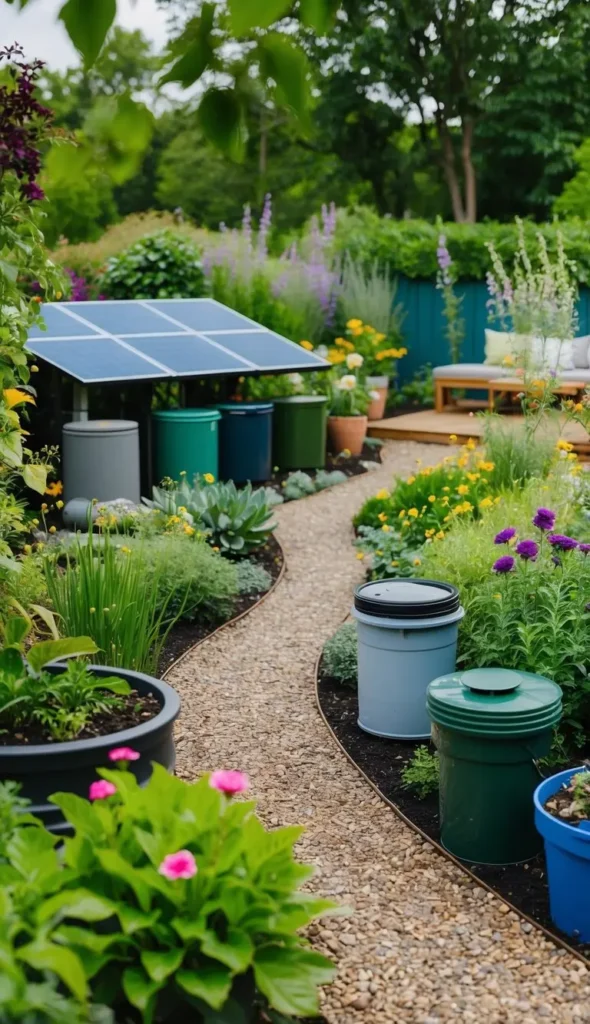
Focusing on water efficiency and selecting plants suited to your local environment helps create a garden that thrives with minimal maintenance. Smart choices in these areas reduce resource waste and encourage natural ecosystem balance.
Water-Conscious Landscaping
You can save significant water by designing your garden with drought-tolerant plants and efficient irrigation systems. Use drip irrigation or soaker hoses to deliver water directly to plant roots, minimizing evaporation and runoff.
Group plants with similar water needs together. This zoning allows targeted watering schedules, preventing overwatering and conserving resources. Mulching around plants helps retain soil moisture and reduces the frequency of watering.
Rainwater harvesting systems can capture and store water for use during dry spells. Installing permeable hardscapes permits rainwater to infiltrate the soil instead of creating runoff. These practices reduce your garden’s water footprint while maintaining healthy growth and appearance.
Integrating Native Plant Species
Native plant species are adapted to your region’s climate, soil, and pests, making them more resilient and requiring less input. Using native plants reduces the need for fertilizers, pesticides, and extra watering, which benefits both you and local wildlife.
Choose a variety of native perennials, shrubs, and trees to support pollinators and create natural habitats. These plants often bloom in a sequence, providing year-round color and interest.
Consult local extension services or native plant societies to identify species suited to your exact location. Incorporating native plants ensures your garden aligns with the natural ecosystem’s rhythms and resources, promoting sustainability and lasting beauty.
For more sustainable ideas, see 12 Sustainable Gardening Ideas From Landscape Design Pros.

